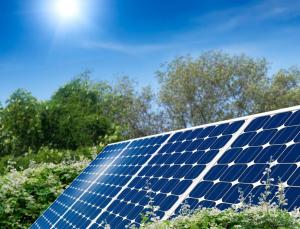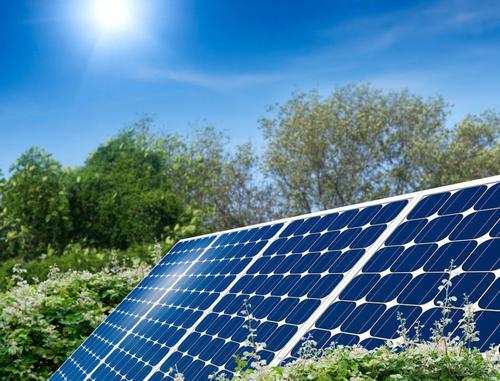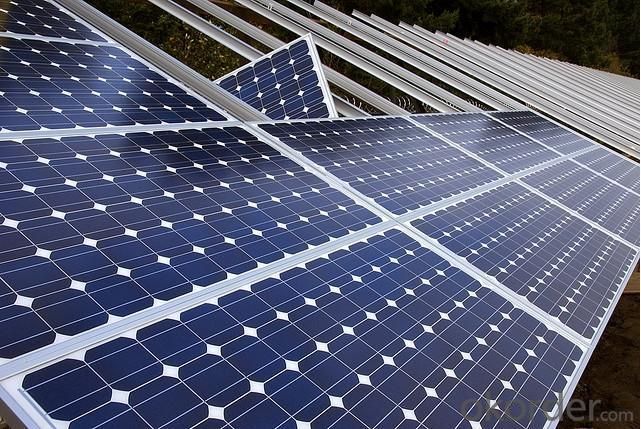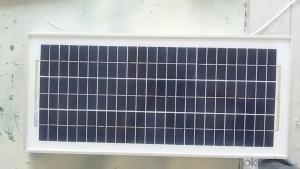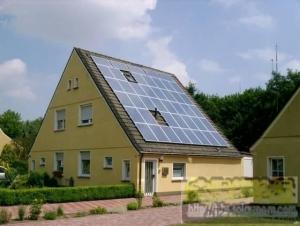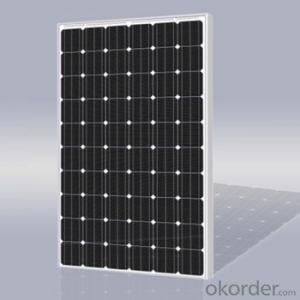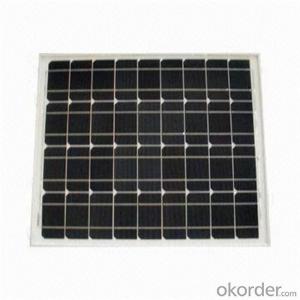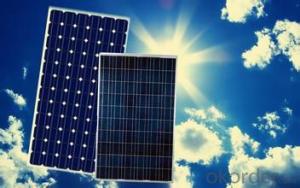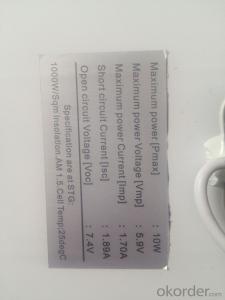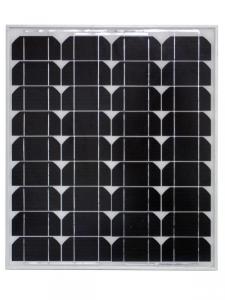Solar Panels Aurora 60~65W Mono Solar Panel - Solar Energy System
- Loading Port:
- China main port
- Payment Terms:
- TT OR LC
- Min Order Qty:
- 10000 watt
- Supply Capability:
- 100000000 watt/month
OKorder Service Pledge
OKorder Financial Service
You Might Also Like
Specification
Production description
Monocrystalline Silicon Solar Panel (60-65W)
• 10 years 90% output warranty
• 20 years 80% output warranty
• High conversion efficiency mono/poly-crystalline amorphous silicon solar cells
• Modules incorporate high performance bypass diodes to minimize the power drop caused by shading
• High transmittance, low-iron tempered glass
• High performance EVA encapsulate to prevent destroying and water.
• AI frame: without screw, corner connection. 8 holes on the frame can be installed easily
• Good performance of preventing from atrocious weather such as wind and hails
• Certifications: CE IEC TUV VDE UL, Class I
Details
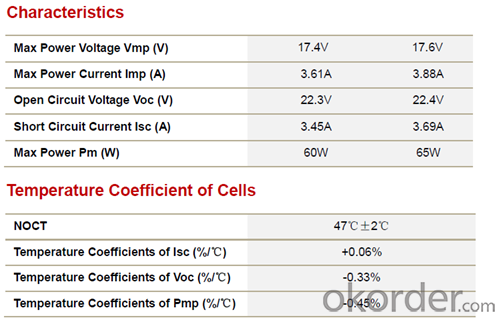
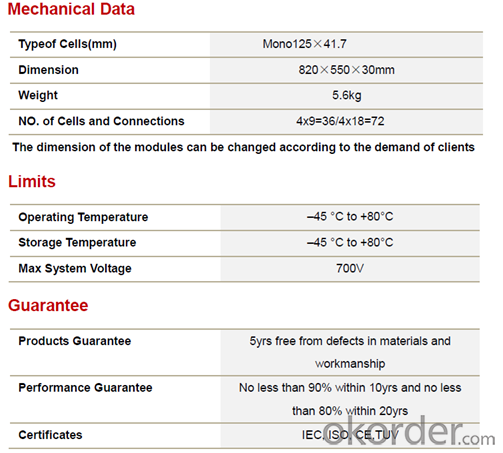

Images
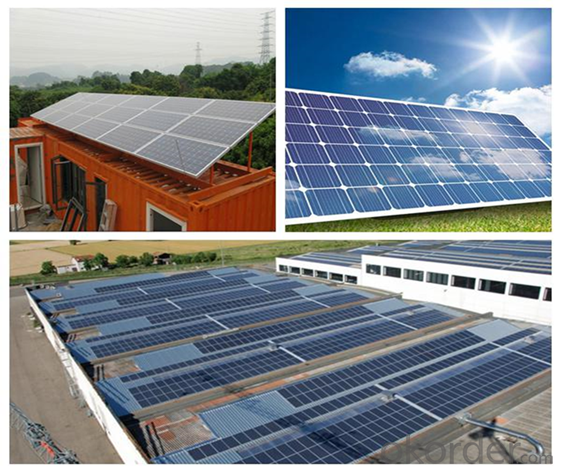
FAQ
We have organized several common questions for our clients,may help you sincerely:
1.What price for each watt?
It depends on the quantity, delivery date and payment terms,
2.How do you pack your products?
We have rich experience on how to pack the panels to make sure the safety on shipment when it arrives at the destination.
- Q: On how to connect a solar panel to a battery and then to a lightbulb,the project is offgrid..
- But be aware that building your own panels will cost more than simply buying ready-made ones. This was not always true, but it is today. As you can see, this kind of information is widely available for free. Beware of scam sites that have a slick pitch making unrealistic promises, trying to sell you an e-book or video of the same stuff.
- Q: Solar panel packages have different levels of power. For instance you can get a kw system but is this kw per hour or day. How does this work?
- kW is the unit of measurement used. kWh means you have kW steady for an entire hour. In the case of solar panels, say you are using 00W panels. That means at any given time assuming ample sunlight is hitting the panel, it is producing 00W. You wanted a kW so you will need ten panels at 00W (less or more depending on the rating of the panel) this will give you kW. That means at any given time you can get as many watts as needed up to kW (000W). Say the sun hits the panels for eight hours a day, you will have kWh each of those eight hours, or 8kWh per day. Unless you have a system of batteries to capture unused power, you will only be able to use up to kW (000W) at any given time, any unused power will be wasted. Solar panels alone are not like a generator, they do not slow down or speed up depending on demand. Even with no load on them, they will produce as much power as they are able, and without batteries that power is lost. To simply answer your question, if you get a kW system, that means kW per hour.
- Q: Can solar panels be installed on a pergola or gazebo structure?
- Yes, solar panels can be installed on a pergola or gazebo structure. These structures provide a suitable surface for mounting solar panels and can help maximize the exposure to sunlight, ultimately increasing the energy production of the panels. It is important to ensure that the pergola or gazebo is structurally sound and properly designed to support the weight and wind load of the solar panels. Additionally, the orientation and angle of the panels should be optimized for the specific location to maximize energy generation.
- Q: Can solar panels be installed in areas with high wind speeds?
- Yes, solar panels can be installed in areas with high wind speeds. However, it is important to ensure that the solar panel mounting systems are designed and installed properly to withstand the strong winds. This may involve using appropriate mounting techniques, securing the panels firmly, and considering the orientation and tilt angles to minimize the impact of wind resistance.
- Q: can solar panels have glass between the panels and the sun?
- As above, but also make sure the panels you use will still produce if partially shaded. Some older panels will quit producing if you so much as put your hand over a small portion of it. Newer ones don't do this but are more expensive. As you may need more panel area to produce enough energy to fill a battery (if that is how you go) make sure you have the room/roof area for additional panels.
- Q: How much energy can a solar panel produce in a day?
- The amount of energy a solar panel can produce in a day depends on various factors such as the size and efficiency of the panel, the location and angle of installation, weather conditions, and sunlight availability. On average, a typical solar panel can generate between 4 to 6 kilowatt-hours (kWh) of electricity per day. However, this can vary significantly, and larger, more efficient panels in optimal conditions can produce even more energy.
- Q: Can solar panels be installed on a historic building?
- Yes, solar panels can be installed on a historic building. However, the installation process may require careful planning and consideration to ensure minimal visual impact and preservation of the building's historical integrity. Collaboration with preservation experts, architects, and local authorities is crucial to finding a suitable solution that balances renewable energy goals with the preservation of the building's historic value.
- Q: What, if any, improvement in efficiency per square foot or meter is realized by a solar panel in space vs. being mounted on the ground where the light is attenuated by the atmosphere?In passing, I found a site that gives an output of .89 watts / 4 in. sq for a particular home-mounted panel.
- I'm not sure on the exact numbers of solar panel efficiency, however i do know that at the radius of the Earth we should be receiving about 000W of power per square meter. This value is lessened by the atmosphere to a value closer to 600W per square meter on the Earth's surface. (on a really hot day) That's a 40% drop in power due to the atmosphere. I'm assuming that the solar panels being in space don't affect it's efficiency (as in mechanically). So its power generation should increase by about 40% when in space compared with a ground based panel of the same design. Hope this helps, Sorry it's kinda sketchy info...
- Q: What is the average size of a solar panel?
- The average size of a solar panel is typically between 3 to 4 feet wide and 5 to 6 feet tall, with an area of around 15 to 20 square feet.
- Q: my dad wants to run all his lights in his shop on solar panels, he has 9 600 watt hps lights. how many solar panels would it take to pull this off
- dozens at a huge cost which only run in sunlight so not ideal for running lights, solar panels are just not economical or reliable, probably around $5000?
Send your message to us
Solar Panels Aurora 60~65W Mono Solar Panel - Solar Energy System
- Loading Port:
- China main port
- Payment Terms:
- TT OR LC
- Min Order Qty:
- 10000 watt
- Supply Capability:
- 100000000 watt/month
OKorder Service Pledge
OKorder Financial Service
Similar products
Hot products
Hot Searches
Related keywords
